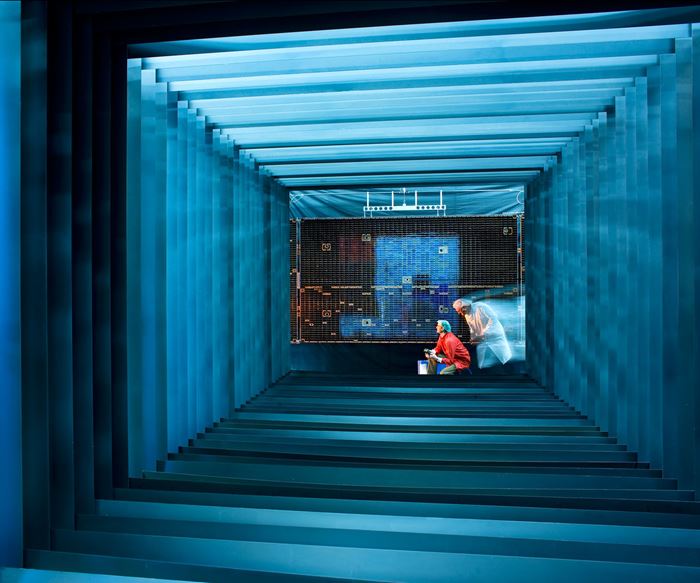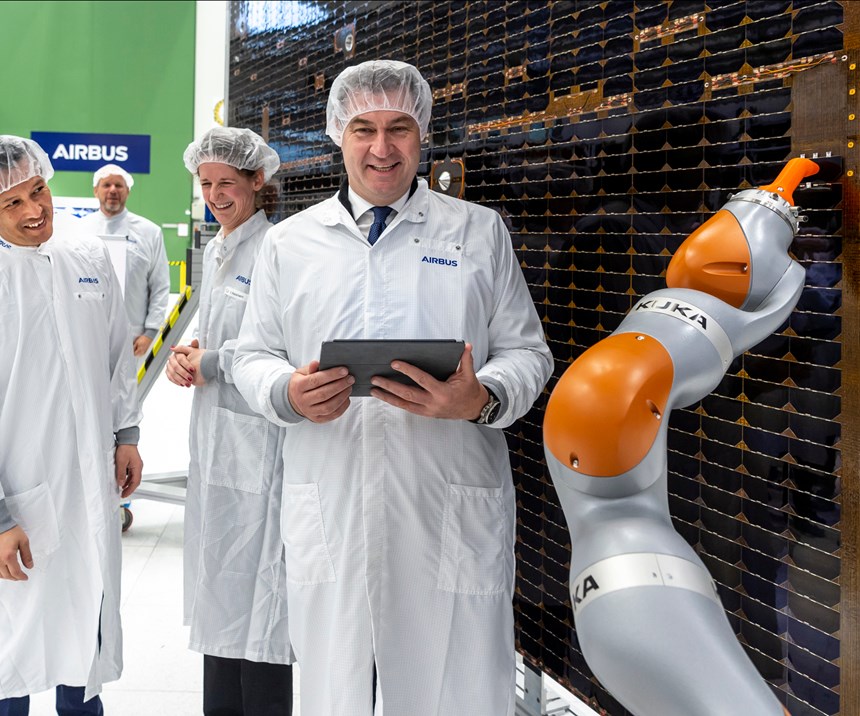Airbus to expand aerospace activities at Ottobrunn/Taufkirchen site
The expansion includes an Industry 4.0 factory to automate and digitalize the production of solar arrays for satellites, as well as expanded clean rooms for optical satellite instruments.
Airbus (Toulouse, France) announced February 11 it is expanding its aerospace activities at its site in Ottobrunn/Taufkirchen, near Munich. The company says it has reached two new milestones, with Bavarian Minister-President Markus Söder and Dirk Hoke, CEO of Airbus Defence and Space, giving the green light for the modernization of solar array production for satellites, and for the commissioning of expanded clean rooms for optical satellite instruments. In total, the company will be investing approximately €25 million.
The expansion includes an Industry 4.0 factory to automate and digitalize the production of solar arrays for satellites. This will entail a complete revamp of the production building, during which it will be expanded by 800 square meters to a total of 5,500 square meters. A robotic assembly line will also be introduced. This €15 million investment demonstrates the company’s ability to remain competitive on the world market, while the automated assembly line will allow throughput times and costs to be halved. This state-of-the-art technology will safeguard 170 jobs and position the company to maximize future growth opportunities such as satellite constellations or ‘New Space’ approaches. Furthermore, ongoing cutting-edge research will be supported, particularly in the area of scientific satellites, such as the Jupiter mission or missions to the Sun or Mercury.
Airbus plans to use the clean room (expanded by 250 square meters to a total of 1,700 square meters) for the integration of satellite-based optical instruments, an area in which Airbus has invested over €10 million at its Ottobrunn/Taufkirchen site. The new clean room will be used to build the MERLIN instrument (Methane Remote Sensing Lidar Mission). MERLIN is a Franco-German satellite project to measure the methane concentration in Earth’s atmosphere to improve understanding of climate change.
“The aerospace site in Ottobrunn/Taufkirchen has not only shaped the history of cutting-edge technology over the last 60 years, it is also actively shaping the future. Today, our solar array production marks our entry into the age of Industry 4.0, with the site now boasting the largest clean room for optical satellite integration in Germany,” says Dirk Hoke, CEO of Airbus Defence and Space.
Related Content
-
Low-cost, efficient CFRP anisogrid lattice structures
CIRA uses patented parallel winding, dry fiber, silicone tooling and resin infusion to cut labor for lightweight, heavily loaded space applications.
-
HyImpulse, Adamant Composites linerless CFRP tank passes hydrostatic burst test
The liquid oxygen (LOX) tank, to be used in a HyImpulse smallsat launch vehicle, demonstrates the ability to withstand pressures well beyond the limits of its intended use.
-
Carbon fiber satellite arm reduces weight, simplifies assembly onto naval vessels
Satcom developer EM Solutions partnered with ACS Australia to replace an aluminum arm design with a 65% lighter, one-piece, corrosion-resistant carbon fiber/epoxy alternative.














